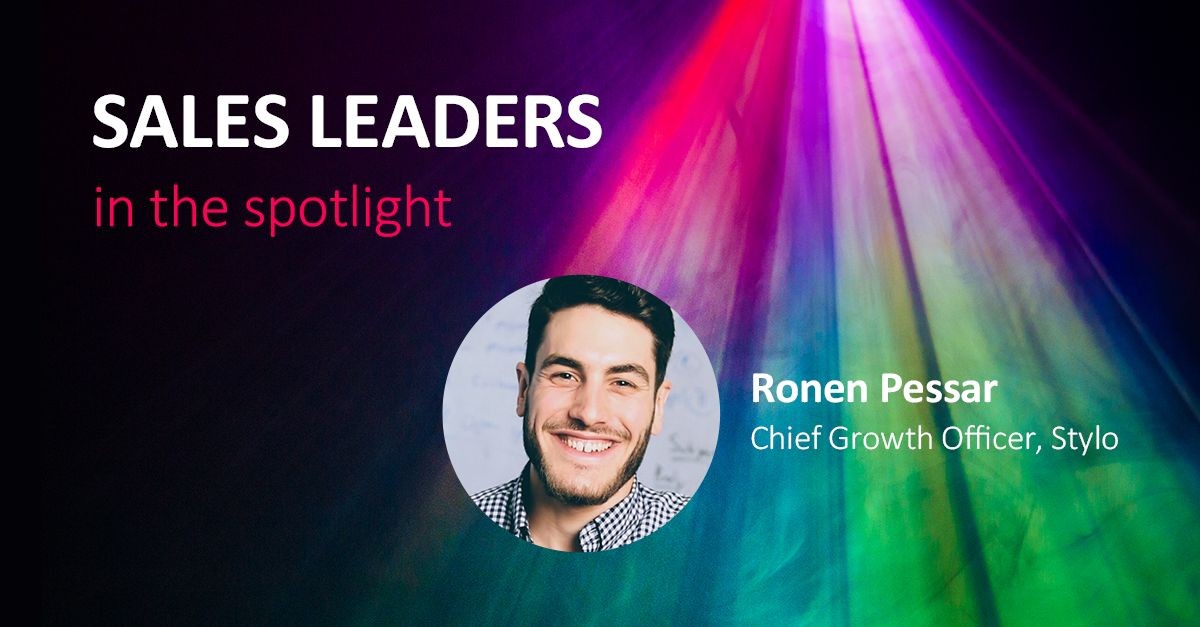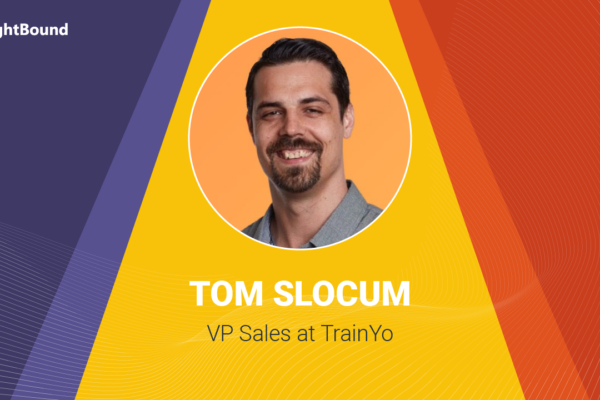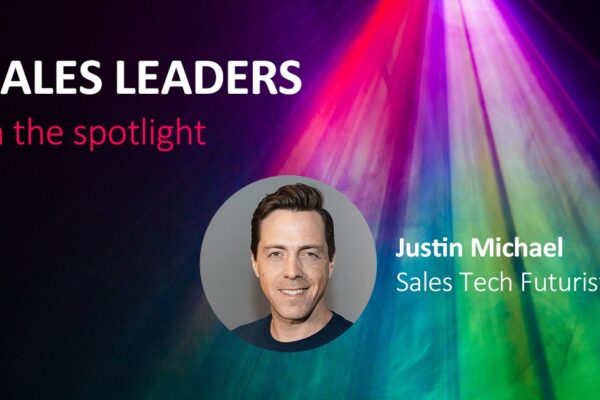
Having spearheaded SDR and sales teams at technology companies for the past eight years, Ronen Pessar is currently Stylo’s Chief Growth Officer. A born leader with the passion and skills to motivate sales teams to overachieve, Ronen is a firm believer in the use of technology to drive growth and attain 10x results.
What is Stylo’s value proposition and who is your target audience?
Stylo is a customer support tool that gives visibility into customer trends by reading through text found in support tickets or chat using AI. The ideal customer profile for Stylo is the person responsible for day-to-day customer support – this could be the CCO (Chief Customer Officer) or VP Support or Customer Support Lead, depending on the size of the company.
What are your main lead sources and what is the ratio between inbound and outbound?
Because we’re early stage, our leads come from dozens of different sources. The primary sources range from people we know and communities where we’re active to pure outbound sources like email campaigns, cold calling, social outreach. I’d say the ratio of outbound to inbound is about four to one. This focus on outbound has started to change recently as we’ve invested more and more in our inbound channels.
How meaningful is outbound for you in terms of volume, customer type, deal size, etc?
From all the companies I’ve worked at, outbound leads are worth more than inbound and typically have higher deal values. The reason is that with outbound you can be very specific and target exactly who you want to be reaching out to, which allows you to speak to the most ideal customer. At Stylo, for example, we might target companies that we see are hiring lots of support agents. With inbound, you get whatever comes in.
This is why you often see two things being very true with outbound: the deal sizes tend to be a lot larger, and the level of conversation a lot higher.

“Outbound leads are worth more than inbound and typically have higher deal values.”
Can you compare inbound to outbound in terms of quality and intent?
Inbound deals often move quicker, because someone who’s reaching out to you knows what they’re looking for. But it’s like finding a needle in a haystack. From 100 leads, you’re likely to get three to five really good ones. Whereas with outbound, the quality is going to be great for every single one. The only downside of outbound is timing.
Not everyone realizes that cold calling or prospecting is more than just a numbers game. When you converse with your target audience, it’s not only about finding people with projects, but also about planting and nurturing seeds for future conversations. So the goal of outbound prospecting is quantity plus quality, which is impossible to do on your own. RightBound helps us do this in mass, something that a human can’t accomplish, no matter how many hours you want to work in a day.
Do you have any tips on how to re-engage previous conversations, either closed lost or other stalled opportunities?
We’ve had a lot of success with touching back with closed lost leads, even folks who weren’t involved in the initial deal but might be an influencer or a technical evaluator. We check in with them every two months – either a short email or call – just to update them on what’s new in our platform. At my previous company, our SDRs loved calling closed lost because the conversation was easy – like checking in on an old friend. It’s always mind-blowing to me how frequently you’ll find out where there’s a project that you can help with if you just keep in touch and consistently stay top of mind.
What’s the right balance between Marketing and Sales for nurturing leads?
Collaboration and communication between Marketing and Sales are crucial for nurturing prospects who have already engaged with you at an event or a demo. For example, Marketing runs a nurture campaign for closed lost leads, and puts them into a drip that talks about an upcoming event. Alongside that, SDRs would call those leads and ask them whether they were planning on attending and why the event might be useful for them. Once they are engaged, the SDR could ask in passing whether a relevant project is top of mind for them at the moment. By working symbiotically and leveraging what the other team is doing, Marketing and Sales can help each other increase KPIs and grow the overall sales funnel.

“We’ve had a lot of success with touching back with closed lost leads, even folks who weren’t involved in the initial deal but might be an influencer .”
How is your Sales org currently structured? Do you have SDRs?
We’re actually in the process of hiring our first SDR, and then probably a second SDR soon after our first AE. Right now I’m doing everything – which is great because I want to be intimately familiar with the SDR’s role. And that’s one thing that I’ve always done as a leader. It’s very important to get out of the ivory tower and stay in touch with the frontlines. Making calls, sending out emails, prospecting – that’s the only way to remain innovative and ahead of the curve, especially in outbound sales.
As the Sales department grows, what would you say is a good SDR to AE ratio?
It always comes down to the company’s goals and conversion rates. I’ve seen everything from 1:1 to 1:5, depending also on the product complexity and marketing inbound channels. Most typically the ratio is around 1:3. But the real question is – how effective can your SDRs be? Tools like RightBound can reduce the need for more SDRs and allow each SDR to support more AEs. For example, if you can eliminate three hours a day of prospecting per SDR, they can do three more hours of outreach (not to mention improving the quality of who they’re reaching out to). This makes your SDRs much more productive.
Can you share one of your “tricks” for improving outreach?
This trick originated as a mistake, and then we realized that it worked so we kept doing it. After an event, we sent out an email that said “Hey, I don’t know if you got a chance to stop by our booth, but we were giving away these socks. Did you get a pair?” And then accidentally 17 minutes later, a second email was sent out with one line saying “Oops, meant to attach the picture.” And it had the picture in it. The accident was that was the second email was meant to go out a few days later.
But instead of turning people off, the second apology email actually got really high open and reply rates. The pair of socks became a conversation starter, and then we followed up with, “we just sent the socks, and by the way, this is what we’re doing now. Do you want to chat?”
What’s the best way to personalize when you’re doing mass outreach?
In my opinion, people are overdoing personalization to the point where it’s getting creepy. Have you ever gotten a message like “I just looked you up on the county website and saw where you live and noticed on your Facebook that your pet just died. I’m so sorry.” This is personalization taken too far.
I prefer the approach that bases personalization on relevancy. If your message is sufficiently relevant, it will feel personalized to the recipient. You don’t need to talk about hobbies or pets – just try to touch on the points that will get someone excited because they have a relevant project or problem they’re trying to solve.
The best sales professionals understand their persona well enough to know the key projects they’re working on and can talk to the challenges of those projects. For example, if you’re selling sales tech and can ask your persona at the right time – “Are you having a hard time going from $10M in pipeline to $50M this year?” – you can get their attention. Then, you can capture their interest by sharing some results your customers have gotten and ask them if they want to see how.


